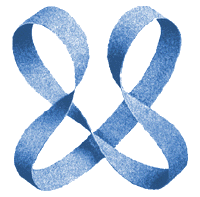
Laws of Media: Tuning the Tetrad
After answering the four questions posed by the Laws of Media, you must then look at the tetrad as a whole. As Eric McLuhan states, "A tetrad takes a fair bit of "tuning" ... to get it polished." EL p. 37 There are a few different techniques you can use.
Complementary Method
The complementary qualities of these laws can be seen when they are taken in pairs either horizontally or vertically.
W. Terrence Gordon MFB p. 129
Looking at any pairing is a good place to start tuning. Looking at enhances to reverses, for example, you have the automobile enhancing mobility but reversing into traffic jams. Obsolences can be considered a reaction to enhances.
Metaphor Method
"This pattern of four aspects of change - enhancing, obsolescing, retrieving, and flipping [reversing] - happens to be the pattern of a metaphor. All metaphors have these four aspects. All metaphors are figure/ground in ratio to figure/ground."
UMe p. 289
After looking at indivual, complmentary pairings, you should examine the relationship of the pairings. For example:
Retrieval is to obsolescence as enhancement is to reversal.
-- and --
Retrieval is to enhancement as obsolescence is to reversal.
You can use the Tetrad Wizard to compose tetrads and examine this relationship.
With the tetrad McLuhan gave us the structure for composing not unlike the formal structure of a haiku. Both structures provide insights into our world.
Simultaneous Method
"This tetrad of the effects of technologies and artefacts presents not a sequential process, but rather four simultaneous ones. All four aspects are inherent in each artefact from the start. The four aspects are complementary, and require careful observation of the artefact in relation to its ground, rather than consideration in the abstract. (LOM 99)
Reading a tetrad does not start from any one quadrant. A completed tetrad should be considered as a whole. So review your tetrad from many different points of view, from different grounds to validate its wholeness.
We use tetrads essentially as multi-sensory resonant probes (means of perception) which act best both sequentially and simultaneously.
Barrington Nevitt WIMM p263
"Electric Language" p. 36-41 discusses tuning.
Updated: Update-Goes-Here